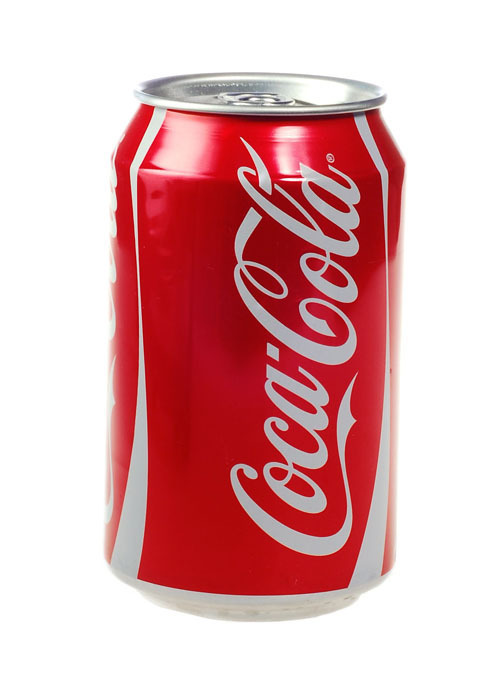What Coke Contains — For the Love of Food — Medium
Geege Schuman stashed this in Collaboration
Stashed in: Awesome, Jerk Store, Coca Cola, Murica!, Medium, That's not food., Coke
The number of individuals who know how to make a can of Coke is zero. The number of individual nations that could produce a can of Coke is zero. This famously American product is not American at all. Invention and creation is something we are all in together. Modern tool chains are so long and complex that they bind us into one people and one planet. They are not only chains of tools, they are also chains of minds: local and foreign, ancient and modern, living and dead — the result of disparate invention and intelligence distributed over time and space. Coca-Cola did not teach the world to sing, no matter what its commercials suggest, yet every can of Coke contains humanity’s choir.
Coca Cola is just one of many chemicals Americans take to self medicate.
Why is legal? Because it kills us slowly.
But it's not food. Not even close to food.Â
(Thanks for fixing the image!)
Coke is to food what Coke cans are to food. Still, interesting story:
Each can originated in a small town of 4,000 people on the Murray River in Western Australia called Pinjarra. Pinjarra is the site of the world’s largest bauxite mine. Bauxite is surface mined — basically scraped and dug from the top of the ground. The bauxite is crushed and washed with hot sodium hydroxide, which separates it into aluminum hydroxide and waste material called red mud. The aluminum hydroxide is cooled, then heated to over a thousand degrees celsius in a kiln, where it becomes aluminum oxide, or alumina. The alumina is dissolved in a molten substance called cryolite, a rare mineral first discovered in Greenland, and turned into pure aluminum using electricity in a process called electrolysis. The pure aluminum sinks to the bottom of the molten cryolite, is drained off and placed in a mold. It cools into the shape of a long cylindrical bar. The bar is transported west again, to the Port of Bunbury, and loaded onto a container ship bound for — in the case of Coke for sale in Los Angeles — Long Beach.
The bar is transported to Downey, California, where it is rolled flat in a rolling mill, and turned into aluminum sheets. The sheets are punched into circles and shaped into a cup by a mechanical process called drawing and ironing — this not only makes the can but also thins the aluminum. The transition from flat circle to something that resembles a can takes about a fifth of a second. The outside of the can is decorated using a base layer of urethane acrylate, then up to seven layers of colored acrylic paint and varnish that is cured using ultra violet light, and the inside of the can is painted too — with a complex chemical called a comestible polymeric coating that prevents any of the aluminum getting into the soda. So far, this vast tool chain has only produced an empty, open can with no lid. The next step is to fill it.
blah blah syrup blah blah carbon dioxide blah blah
The top of the can is then added. This is carefully engineered: it is made from aluminum, but it has to be thicker and stronger to withstand the pressure of the carbon dioxide gas, and so it uses an alloy with more magnesium than the rest of the can. The lid is punched and scored so that a tab opening, also made of aluminum, can be installed. The finished lid is put on top of the filled can, and the edges of the can are folded over it and welded shut. 12 of these cans are then packaged into a painted paperboard box called a fridge pack, using a machine capable of producing 300 such packs a minute.
i thought they released the secret recipe...now i am just disappointed and this articles fails
Jared, check out the Disney cartoon. Â We used to make bombs out of bacon grease! Â That should lift your spirits.
Disney cartoon:
The process of making a can of Coca Cola is so perfect.
It reminds me of the Twinkie -- perfectly engineered to look and taste wonderful.
It would probably be safer to eat the can than drink the Coke. Â I only use it for industrial strength cleaning jobs. Â Since I was born and raised in Miami Beach Coke was more often ingested with its original ingredient, cocaine, which made it more sensible. Coke was invented as a patent medicine therapeutic for all sorts of late 19th century ills, since then evolving into a toxic beverage, an international corporate juggernaut and a darling portfolio company of investor Warren Buffett.
Watch the 80s movie The Coca Cola Kid, starring one of the worst B-movie actors ever, Julia Robert's brother Eric, in one of his best acted roles ever...also set in Australia. Â It's actually pretty good fun in tying all the above themes together, though probably paced too slow and somewhat technologically dated for everybody else's CGI, World War Z sensibilities.
I'm intrigued; now I must see The Coca Cola Kid. Â Thanks for the point, Rob!











4:20 PM Sep 14 2013